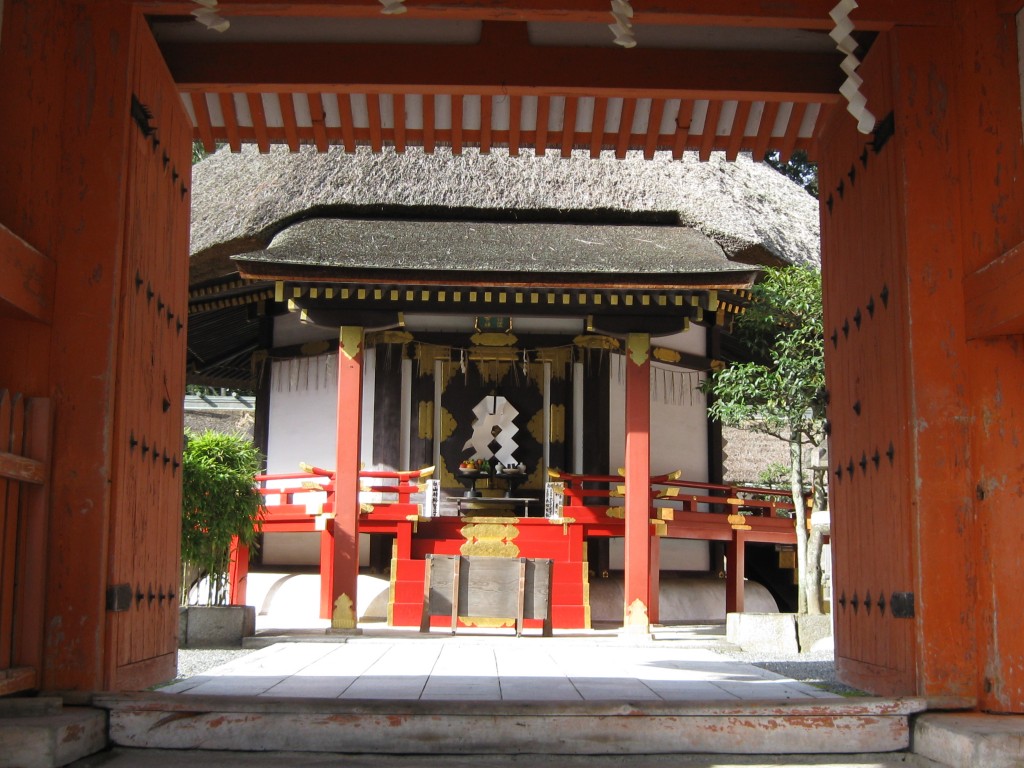
A rare sight: open gates at the Daigengu on Yoshida hill
Not many people know of Yoshida Shrine’s Daigengu. Yet this hexagonal building could be considered the city’s secret power spot, for it enshrines all the kami that existed in medieval Japan. Yes, that’s right: all the kami ! All 3,132 of them. There’s nowhere else in Japan that you can get to pray to anything like that many kami in one visit.
The shrine is properly known as Daigengu Saijosho (Ceremonial Site and Shrine of the Great Origin). It was first established in 1484, and the present buildings date from the early seventeenth century. It owes itself to the remarkable Yoshida Kanetomo (1435-1511), head of Yoshida shrine, who made an audacious bid for supreme spiritual authority.
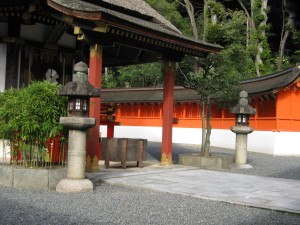
The semi-circular arcade around the main shrine which enshrines all the kami of the whole of Japan as it existed in Kanetomo's time
Yoshida Kanetomo
Kanetomo must have been a charismatic character. He lived at a time when Shinto was subsumed in Buddhism, and according to the honji-suijaku theory kami were considered traces of the Buddhist essence. They were local manifestations rather than the real thing, and they were in need of salvation. Buddhist priests served at many of the country’s shrines and prayed for enlightenment of the kami.
Kanetomo made a single-handed attempt to reverse all this by asserting kami primacy. Buddhist deities were secondary and owed their existence to kami, he claimed. He concocted a barely intelligible theory to substantiate his view, using metaphysical notions and arguments drawn from esoteric Buddhism. He maintained that all of creation derived from a kami called Kuni no Tokotachi, and falsely attributed to Shotoku Taishi a saying that Shinto was the root of the national culture, while Confucianism represented the leaves and Buddhism the fruit.
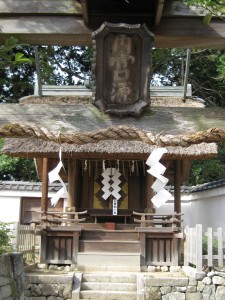
The model Naiku of Ise Jingu
Bid for supremacy
Kanetomo had good connections at court, for he had worked as Imperial Chamberlain and Senior Assistant Director of Divinities. No doubt this emboldened his drive for spiritual authority. He built an altar at Yoshida Shrine to serve as the centre for Shinto practice, thereby attempting to usurp Ise, and constructed the Daigengu with its semi-circular arcades to enshrine all the kami of the country.
For good measure Kanetomo built models of the Naiku and Geku of Ise Shrine at the back of the Daigengu courtyard. Then, in his most breath-taking stunt, he claimed that the sacred objects of Ise had flown to Yoshida! Such was his gall that he was able to persuade a gullible emperor to come and authenticate the objects.
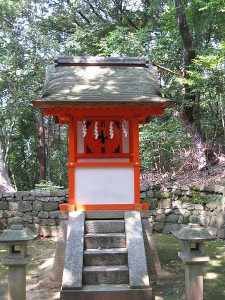
The Shinryusha (Sacred Dragon Shrine), marking Kanetomo's burial place on Yoshida hill
Yoshida power
Kanetomo’s legacy was a body of work known as yuitsu Shinto (the one and only Shinto). He was also able to set up a system of licences issued by Yoshida Shrine which was highly influential in Edo times. It was only after the Meiji Restoration of 1868 that Yoshida lost its power, but it still remains one of the city’s great delights with its hillside setting next to Kyoto University.
The British Council used to have offices opposite Yoshida hill, on Imadegawa street. When I first visited Kyoto, I had an appointment at the Council and afterwards, drawn by the red torii at the base of the hill, wandered up the tree-lined paths of the enchanted hill. In a clearing at the top a lone saxophonist was blowing a melancholy tune, and the vista behind him opened up to a view of the city in the valley below. I knew then that I had to come and live in Kyoto…. Perhaps, unbeknown to me, I had been lured by the unseen power of the Daigengu!
(N.B. The Daigengu is usually shut, but opens exceptionally on the first day of every month; at New Year; and for Setsubun.)

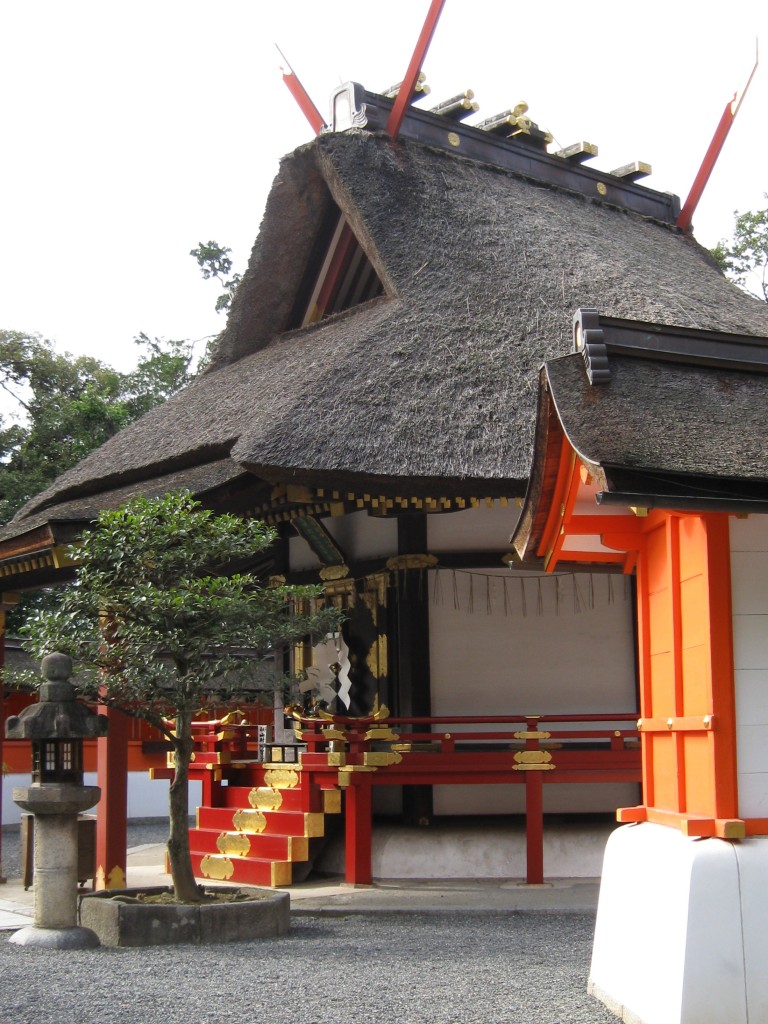
Stunning last photo. The straw roof really makes this shrine extraordinary.